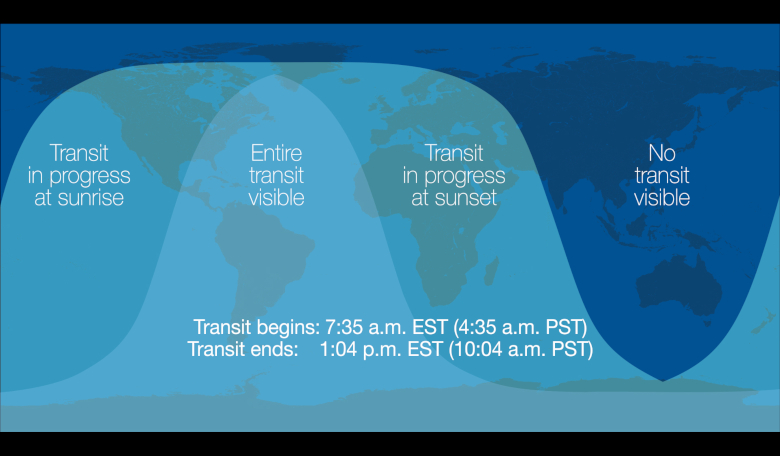Mercury, the innermost planet of the Solar System will be making a rare transit of the Sun today (11 November, 2019) and from around 1200 UTC (12.00pm GMT) people from South America, eastern North America, and far-western Africa will be able to watch the transit in its entirety. For those not lucky enough to be stationed within a full viewing zone, the transit will be visible in part from most of Earth’s globe.
A Mercury transit of the Sun as seen from Earth occurs when the Sun, Mercury, and Earth line up so that Mercury appears in front of the Sun as a small black disk moving across the Sun for several hours.
Mercury's orbital plane is tilted a few degrees in relation to Earth's orbital plane, so it is rare that our planet and the small, boiling hot and freezing cold world of Mercury, are on the same level and side of the Sun as they cross our host star.
As such, Mercury transits only occur about 13 to 14 times per century. The last one was in 2016, but the next one won’t be until 2032.
Because of Mercury's small size and substantial distance from Earth, it will require a telescope to see the transit take place. Skywatchers must use special sun-viewing lenses to safely observe Mercury's transit, or if you want to play it safe or can't watch the transit take place, NASA have created https://mercurytransit.gsfc.nasa.gov to let you watch this event as short movies in almost real time.
The transit lasts a little over 5.5 hours, ending as Mercury leaves the disk of the Sun about 1806 UTC but continues moving out through the corona for another 30 minutes.











